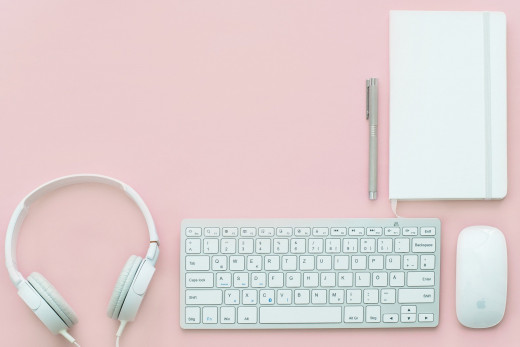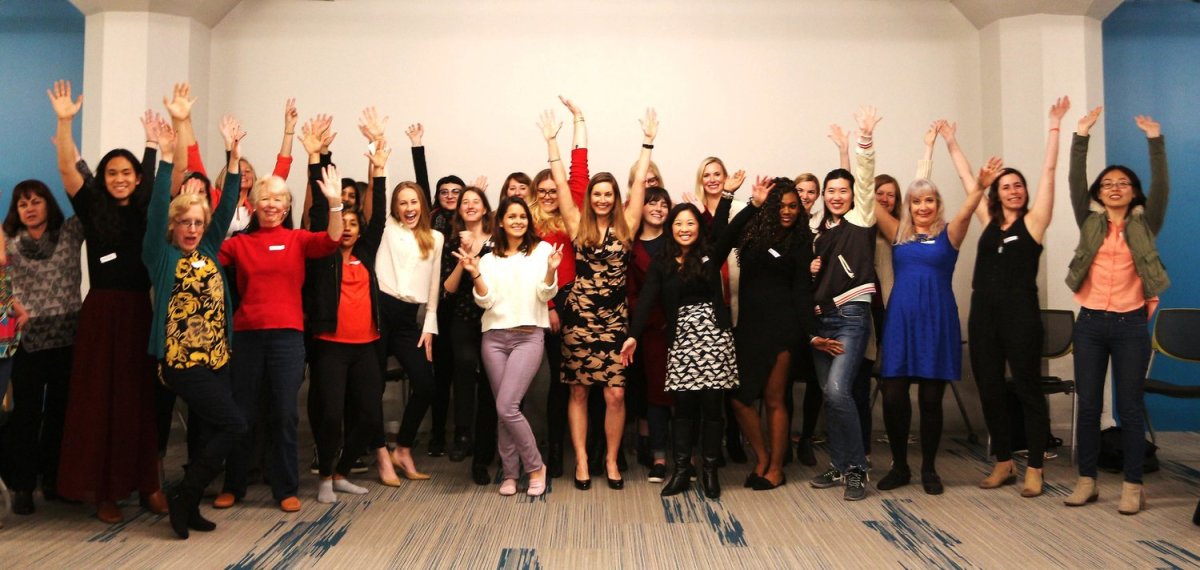Working From Home - How to Maintain Work-Life Balance

Working From Home - A New Normal?
It seems like forever ago, but just until barely a few months ago, remote working was something reserved for those who intentionally pursued this lifestyle and usually already had the skill set required to make the best of it.
Typically, remote workers had the experience down and their life was organized to accommodate work without causing any issue; they had arrangements for everything, plans, structure, the works - but none of these things came to them overnight. They worked hard to create a space to work without distractions, they arranged childcare, they learned to communicate in a way that makes them feel less isolated.
For the rest of the folk just now sent home to do their work remotely, or for anyone looking to opt into this workstyle indefinitely, there are a few things to be aware of to make the adjustment period as easy and seamless as possible.
After all, whether we like the scenario we are currently in or not, we may need to learn to accept it as a new normal and start rebuilding our work around our personal lives. The formula will be different for each of us, but some basic principles will apply.
How long have you been a remote worker? How do you feel about it?
Comfort is Key
Comfort is something we think about in the physical sense typically, but it is a double-edged blade in the end. Working from home will demand that we are comfortable with the arrangement both physically and mentally, which is not something most people are right off the bat.
If we are abruptly starting our WFH career due to unforeseen circumstances, we may not even have a workspace at home - we may not own an appropriate computer chair, a desk wide enough, a quiet room. These all seem like small things, but they quickly add up. People who are already remote workers appreciate that this requires a certain setup that will be conducive to productivity and their health.
To overcome these obstacles, we often have to accept the fact that it will take some work to create a physical space to work with that will allow us to be our best selves. There are two things to keep in mind here:
- We need to figure out where we will be doing our work
- We have to set that space up to be as conducive to productivity but also comfortable
Think about what you are missing:
- A good computer chair or generally a good place to sit (do not sacrifice your back for anything)
- A separate room to work in (a lot of us do not have the luxury and have to create a nook somewhere)
- An environment that is free of distractions (do we have kids at home, is it noisy, how well we tolerate noise and distractions in general)
After you have an idea of what you will need to readjust, plan, and prioritize accordingly.
Ultimately, all these factors boil down to the simple fact that we are required to do everything it takes for us to be able to complete our daily tasks in the approximately same time-frame as we were able to in an in-office setting.
Think proactively and positively and make sure to set yourself up for success, whether you have the luxury of a home office or not.
Do Not Pollute Resting Areas With Work
Something that a lot of us underestimate is just how insidiously personal and work lives can seep into each other. This is of course very complicated and depends on a lot of circumstances that are sometimes out of our control, but there are also many things we absolutely can shift around to make the experience as easy as possible.
Have you ever thought about the small items you have at your work desk or the trinkets and possessions you keep at home? These are now all at home and you may find that they started commuting from your work area to your living area with an alarming frequency.
This may seem silly, but our brains are wired to associate certain environments with certain feelings, and scattering things around is a confusing message we are sending to ourselves.
A good rule of thumb is to keep your working area just that - your working area - do not overembellish it or make it fit the theme of your home too much. While it will be cozier and may end up being something you will settle on after a while, in the beginning, it is a good idea to keep it as separate in your mind as possible.
Likewise, you may be tempted to take a document and sift through it in the living area, but this may wire you to think more about your work even after you are done, especially if you leave some work materials sitting around.

Schedule Constructive Breaks
In an office setting, it is very easy to plan for breaks - you may have a coworker that you have lunch or coffee with, and your lunch hour may be well-defined. You may be used to taking smaller breaks more frequently and there may be someone physically present there to remind you to take them.
In a home environment, it is very easy to forget to take breaks, and depending on workload and stress, it may even be easy to skip on having lunch due to losing oneself in work and, unfortunately, the more distractions we have, the more likely this is.
To resolve this, at least while adjusting, make sure to purposely schedule breaks and to adhere to this schedule strictly. Note that our productivity drops if we are not unwinding a bit every once in a while and that burnout is even more likely at home where we are typically insecure that our output matches what we had in the office.
Useful tips for a constructive break at home include some of these:
- Walking away from the workspace to remove it from sight (go to a nearby store, sit in the patio or take a short walk around the block, whatever is possible)
- Find a hobby that is not time-consuming and incorporate it into your schedule
- Stretch or do a quick workout
- Pre-cut your dinner ingredients (many find this enjoyable)
Bottom line is, do not forget to take breaks and make sure to replenish yourself mentally during those - otherwise, work will inevitably suffer (or you will).
Log Off
The fact is, we are no longer exerting ourselves physically as much as we used to and there are no social clues sometimes indicating that the day is wrapping up. This seems unimportant any many of us know exactly how many hours we worked any given day and when we are done - but it is not always the case.
It is very easy to lose track of time when we are already home or to get into a mind-frame where we think that as we are no longer commuting, that we might as well use that time to work more and get ahead of things. While this is admirable and sometimes reasonable, it is very important to keep track of time and log off when our hours are over.
Learn to set clear boundaries between your personal and work life, and when your work for the day is over, log off and remove yourself from the space both mentally and physically.
Get Up And Move a Bit
This was already mentioned, but getting up simply to stretch your legs a bit may improve your health immensely.
We are all well aware that our homes are environments where we usually rest and feel comfortable, but once our entire days are spent there we need to nudge our minds in the right direction and be mindful of exactly how much we move (or do not).
At work, we frequently gloss over the fact that we do in fact get up many times - we go to the kitchen to grab a cup of coffee or a glass of water, we walk to the printer, we walk over to our colleagues - the list goes on. At home, there are few reminders to move for many of us. Those with kids may check on them and so on, but the rest should plan for movement - even if it initially requires setting alarms to do so.
Think of your heart health among other things - if we are fully sedentary we are taking unnecessary risks in the long run. A couple of minutes of stretching and simply doing some small thing to get the heart pumping counts towards those recommended 150 minutes of activity per week. Everything adds up!
Dress For Work!
This may seem like a no-brainer, but it is very easy to become a bit disillusioned with the entire idea of changing attires back and forth if we are going to be home all day anyway.
Having said that, it is also a great mind trick to play on yourself - when we go from being dressed for leisure and comfort to being dressed from work, it sometimes signals our brain that it is time to, well, work. That, and the fact that we are frequently in virtual meetings (Zoom, Skype, etc.) gives us great incentives to get into full working mode.
A word to the wise, getting all made up upstairs and staying is slops below the waistline does not count. We should be comfortable for sure, but not too comfortable.
Use Time Gained From Not Commuting Meaningfully
A lot of us actually save a lot of time once we become remote simply due to the fact that we no longer need to commute. Traffic, public transportation, walking, all that time-consuming stuff flies right out the window and suddenly we are given more time to manage.
Most will see this as a saving grace, which it frankly is (unless you walked a bit and now you get less exercise), but we fail to plan for it properly.
Some great ideas of what to do with this newfound freedom:
- Use that time to exercise (especially if walking to work had been your only exercise)
- If you work from a room where you also rest, dedicate part of that time to clear your living area of reminders of work and set everything up again tomorrow
- Get into the zone - mentally prepare to do work and after you are done, unwind before rejoining your family or resume your leisurely activities
Not commuting is a huge benefit for remote workers without a shadow of a doubt - but ultimately, using any free time wisely is up to you. Do whatever makes you feel happy or productive and do not stress about it initially.

Be Kind To Yourself
In the end, regardless of the circumstances that made us start working remotely, the most important thing is to remain positive and kind to ourselves. Most of us were shunted into this world due to the coronavirus pandemic and appreciate that this may very well be a temporary setup.
However, the suddenness is frequently a lot for us and we sometimes fail to organize as well as we wanted to or are unable to make arrangements for everything. Do not worry about the minutia initially, and keep in mind that whatever happens, you should be your own top priority. Whether you have a family or not at home, the beginnings of every new situation will always be at least a bit clunky.
You may not have a suitable space, or an environment free of noise and distractions, or really any desire to be isolated from your coworkers, but it all boils down to doing what is needed to readjust.
Note that many of us will be happy to continue working from home as our productivity will rise, but whatever the outcome is, always remember to be kind and understanding to yourself.
This content is accurate and true to the best of the author’s knowledge and is not meant to substitute for formal and individualized advice from a qualified professional.
© 2020 Ellie Lowe








